Bay horses are horses with brown bodies and black manes and tails. Bay horses also have black legs (which may or may not be interrupted with white socks), black ear tips, and a black muzzle. This coloring on the legs and head is referred to as having “black points.” 🤎🖤
Bay horses can sometimes be mistaken for other darker-colored horses including black and smoky black. However, the distinctive coloring of bay horses is simple to identify once you understand what to look for.
First some key facts about bay horses:
| Rarity | 📊 Common. About 20% of all horses are bay. |
| Other names: | Bay variations include wild bay, blood bay, silver bay, and more. |
| Average Cost | $9,430 |
| Desirability | 💰 Bay color doesn’t command a premium, but |
| Genetics | 🧬 If the agouti gene is dominant the horse will be bay |
In this article, you will learn more about bay horses, the genetics behind their color, and tips on how to get a bay horse if you’re ready!
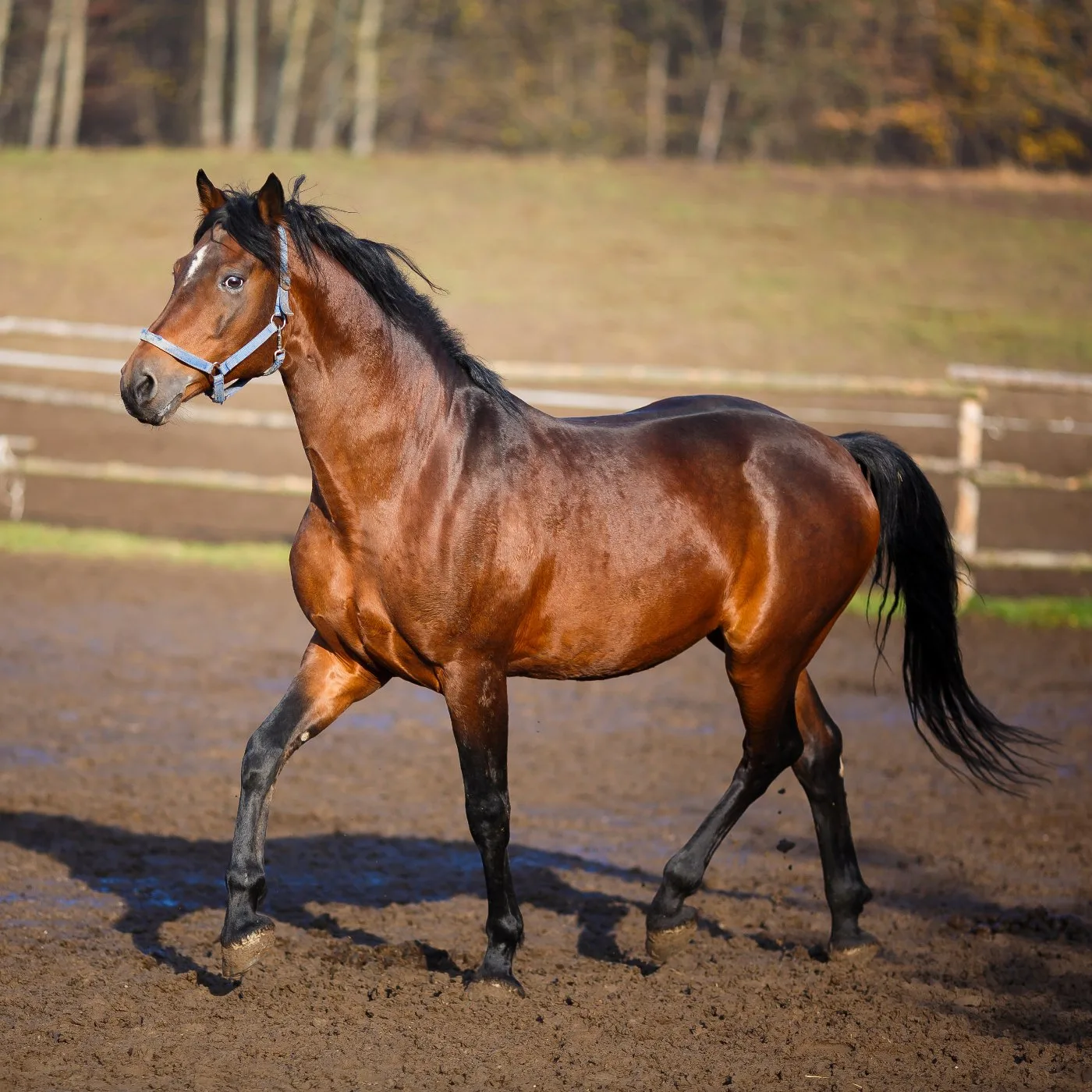
The Basics of the Bay Color
Unlike many horse colors like buckskin or blue roan, bay is a coat color that is generally easy to recognize. A bay horse is characterized by a brown body and black points (mane, tail, ear edges, and lower legs). The intensity of the brown color can vary from light tawny-chocolate brown to a rich, almost black brown.
The classic bay color occurs when the genes for both BLACK and AGOUTI are present. The Agouti gene restricts the black color to the points of the horse. The brown color of these horses is produced by the combination of the black color gene and the Agouti gene.
Variations of Bay
- Wild Bay: This variation of bay has lighter-colored body and darker points, including the mane, tail, and lower legs. Uniquely, wild bay horses’ black leg markings usually end lower, below the knee.
- Blood Bay: Blood bay horses have a reddish-brown coat color with black points.
- Mahogany Bay: Mahogany bay horses have a deep, dark brown coat color with classic bay black points.
- Copper Bay: Copper bay horses have a bright, reddish coat color, resembling the color of a new penny.
- Dapple Bay: Dapples can occasionally show up on all shades of bay. but are most commonly seen on young, freshly bathed mahogany bay horses. Sun bleaching and age can cause them to fade. Dapples are lighter-colored circular markings that appear on a horse’s coat, most often seen on grey horses.
- Silver Bay: Silver bay horses have a light to medium reddish-brown coat color with silver or grayish points, such as a silver mane and tail (Yes! These horses break the black-points standard. They’re a little tricky to identify due to the silver gene and may often be confused for chocolate palominos)
- Golden Bay: Golden bay horses have a golden or yellowish-brown coat color with black points. Generally, this is considered the most rare of bay variations.
Bay Horse Breeds
Bay horses are found in most horse breeds. In fact, bay is believed to be one of the oldest horse colors,1 so it is present in nearly every horse breed (including breeds known for being a certain other color- like Lipizzaners!)
In the United States, the breeds in which bay horses are most common also happen to be the most popular horse breeds overall:
- Thoroughbred: The Thoroughbred breed often features bay horses. Bay is one of the most prevalent coat colors in this breed and you’ll often multiple bay horses in any thoroughbred race. In fact, the most expensive horse at the latest Keenland 2-year old racehorse sale was a bay horse that sold for $500,000.2
- Quarter Horse: Bay is also a common color in the popular Quarter Horse breed. This versatile and popular breed frequently exhibits wild colors including silver and dilute, but bay horses remain common.
- Arabian: Bay is a frequently seen color in Arabian horses. This ancient and elegant breed is known for its diversity in coat colors, with bay being a prized color. Dark, mahogany or reddish-brown bays are more common in Arabians that in other breeds.
Distinguishing a Bay from Other Brown-based Colors
Bay horses are sometimes confused with other brown-based coat colors. Here are four ways to tell the difference between them:
⬛ The black points – the distinctive black mane, tail, ear edges, and lower legs are classic markers of a bay horse.
🌈 Color distribution – While brown horses generally have an even color distribution across their body, bays will have a distinct contrast between their brown bodies and black legs and points.
🧬 Genetics – While it’s possible to get a horse color DNA test to know a horse’s color for sure, it’s often easy to know simply by looking at the horse’s parents. If a horse has one parent that is bay and neither parent is of a different color, your potential bay is most likely a bay horse. Using these methods, you can easily distinguish a bay horse from others. Like black horses, bay horses are susceptible to sun bleaching.
How to Get a Bay Horse
If you want a bay horse, there are two ways to get one: buying one or breeding one.
Breeding a Bay Horse
“The restriction of black is caused by the presence of the agouti gene. When the agouti gene is dominant the horse will be bay.”3
Breeding a bay baby horse is relatively simple. This is because the bay color is dominant. Any bay horse has a good chance of passing the agouti gene along to their offspring- if two bays are bred together, there’s a nearly 100% chance that the offspring will be bay.
Compared to the trickier prospects of breeding two white horses or two leopard appaloosas together hoping to get a similar foal, breeding bays is far more straightforward. Thanks to dominant genes, less is left to chance.
| Parent Horses’ Bay Gene | Probability of Bay Foal |
|---|---|
| Both Homozygous Bay | 100% chance of bay foal |
| One or both Heterozygous Bay | Very high probability of bay foal, but a slight chance of a non-bay foal |
Buying a Bay Horse
Purchasing a bay horse is a straightforward way to get a bay horse. There’s no guesswork on whether the horse will actually be bay or worry that they’ll have health issues related to coat color (as can sometimes occur with grey horses).
Buying an adult bay horse allows you to choose a horse with the right level of training and the perfect temperament to suit your needs.
- 📊 Bay horses are common. Our analysis of the most popular American horse breeds (Quarter Horses, Thoroughbreds, and Arabians) found that 20% of horses are bay.4
- 💰 The most common sale price for bay horses is between $5k-$10k. 30% of all bay horses for sale were listed in this price range.
- 🎖️ Bay horses are not more or less expensive than other colors, when all other colors are averaged together. Based on our research, we found that bay horses were slightly less likely to be in the highest price bracket ($20,000+), but were also less likely than other colors to be in the lowest price bracket ($0-$2500).
- 🛍️ The average list price of a bay horse is $9,430 – This compares to an average list price of $9,378.00 for all colors of Quarter Horses in 2023. 4
- 🏆66% of all bay horses were listed for under $10,000. This suggests that several high-priced outliers influence the average price listed above.
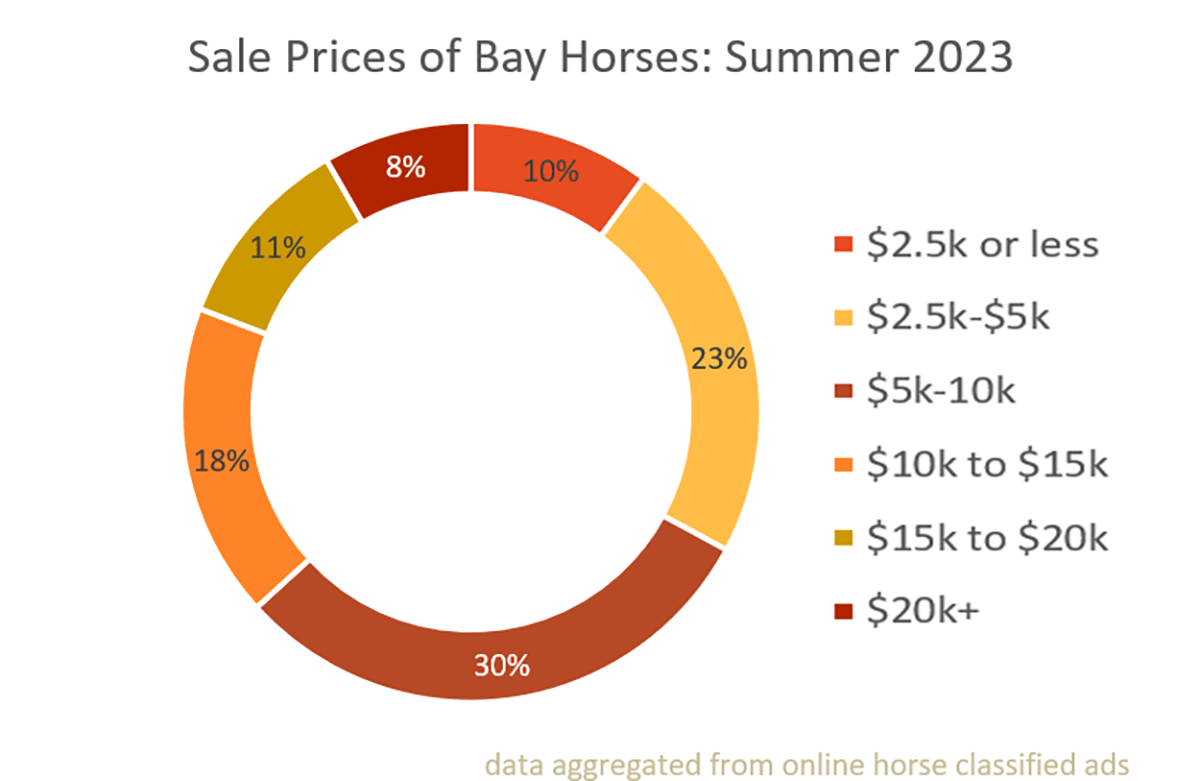
Photos of Bay Horses
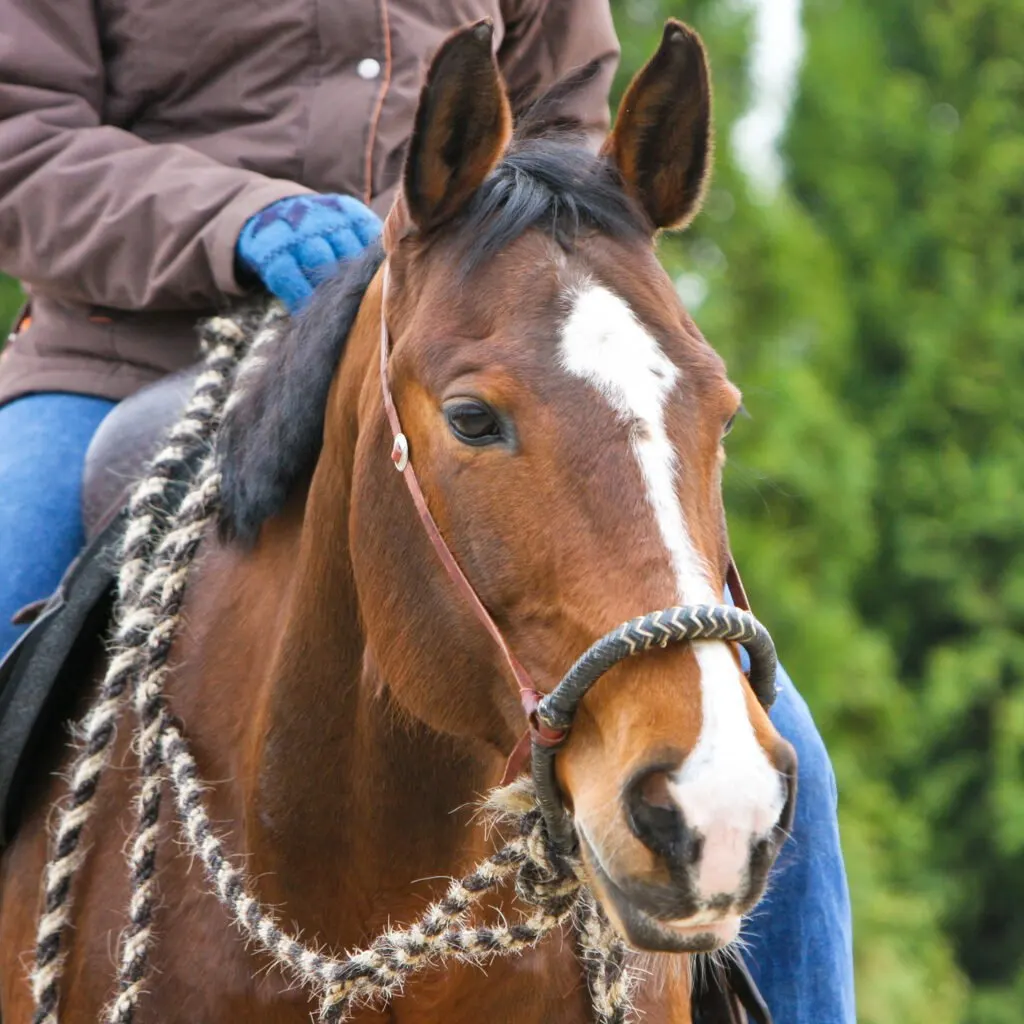
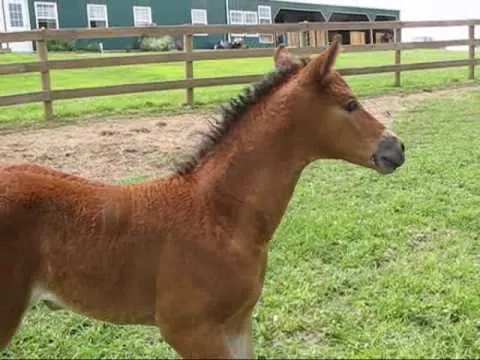




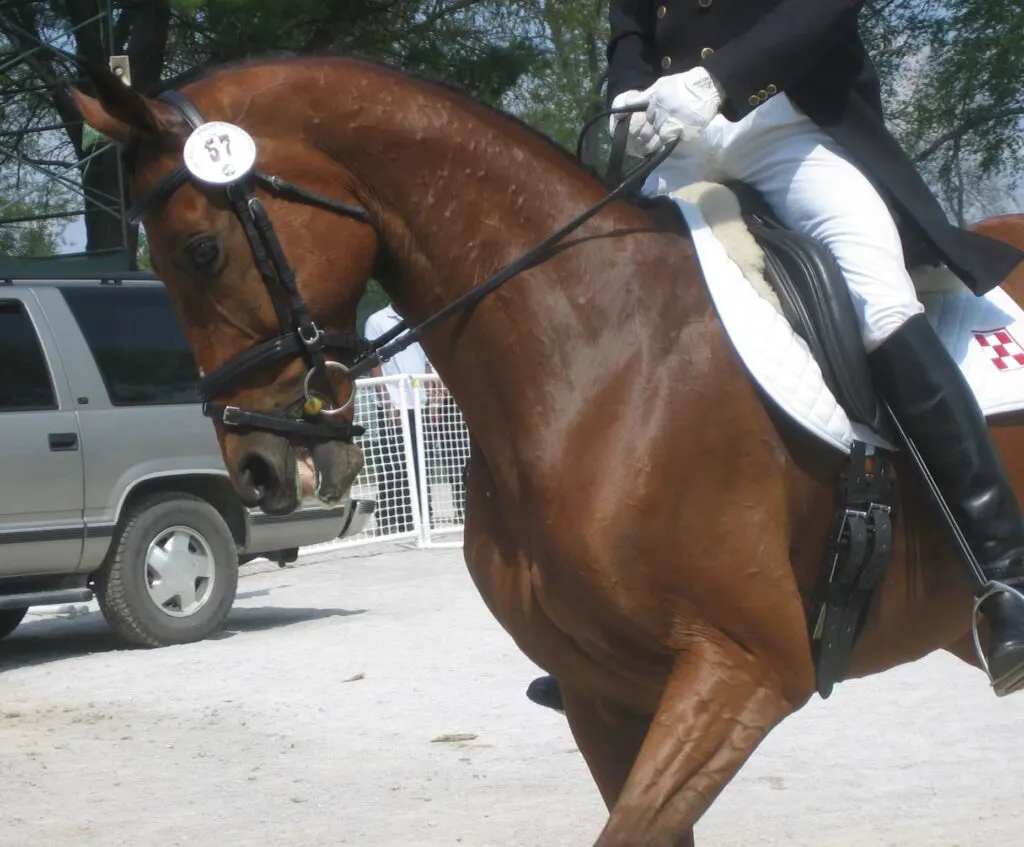


Colors that Look Best on Bay Horses
The colors that look best on bay horses are warm neutrals (tan, beige, warm-grey), earth tones (hunter green, eggplant, mustard) and jewel tones like raspberry and turquoise. I particularly think a turquoise color pallet highlights a bay horse’s coat because it creates a beautiful contrast with its reddish-brown fur.
Because brown horses and bay horses are so common in Western pleasure, and look so good in turquoise, it’s common to see this color available in Western pleasure horse show clothes. The combination of brown and turquoise is visually striking, which can help win a judge’s attention in the show ring.
Final Thoughts:
In conclusion, bay horses are ordinary, common, but stunning. With great nutrition and good grooming, a bay horse can gleam- turning heads just like a horse with spots or a wildly colored appaloosa.
While they are sometimes seen as a boring color- there’s nothing boring about riding a horse you love that is a good fit for your skills and riding style! Bay horses are common, reliable, and affordable. Unlike other colors of horses, you can trust that when you buy a bay horse, you aren’t paying a premium price just for color.
Common Questions About Bay Horses
Why is a horse called a bay?
A horse is called a bay due to its specific coat color, which is characterized by a brown body with black points. Linguists think we might call horses “bay” based on the Old English word ‘baye’ or ‘baie’, which comes from from Old English ‘beġ’ (“berry”), as in beġbēam (“berry-tree”).5 It’s possible the reddish brown color of a bay horse lent itself to being described as the color of a berry.
Is bay a horse breed?
Bay is a horse color, not a horse breed. Bay horses occur in many horse breeds, but there is one horse breed that only comes in bay. This bay breed is called the Cleveland Bay. It’s a relatively rare breed, known for its bay color, good temperament, and muscular build.
What’s the difference between bay and brown horses?
The main difference between bay and brown horses lies in the shade of their coat colors. Bay horses have a reddish-brown or mahogany body color with black points, while brown horses have a true brown coat color without any black points.
Was Seabiscuit a bay horse?
Yes, Seabiscuit, the famous racehorse, was a bay. He had a reddish-brown coat color with black points.
What are bay horses known for?
Bay horses are known for their versatility, as the bay coat color is quite common across different horse breeds. They are admired for their beauty, and bay horses often have a metallic sheen in their coat when groomed well.
Are bay horses rare?
No, bay horses are not considered rare. In fact, bay is one of the most common coat colors found in horses.
What makes a bay a bay?
A bay horse is characterized by having a reddish-brown or mahogany body color and black points. The presence of black points distinguishes a bay from other coat colors.
Can a black horse be born bay?
No, a black horse cannot be born bay. The black coat color is distinctly different from bay, and once a horse is determined to be genetically black, it will not change to bay.
What is a bay in horses?
A bay in horses refers to a specific coat color characterized by a reddish-brown or mahogany body color and black points (mane, tail, and lower legs).
Names for Bay Horses
Choosing a good name for a horse is important because a good name can help create a bond and makes them stand out. (That’s extra important for a bay horse- since in the average horse boarding farm there might be a dozen or more bay horses!)
A well-named horse helps people identify and communicate with the horse and about the horse- so choose wisely!
Tango: 🕺 Energetic and full of life!
Sable: 🖤 Alludes to the sleek and dark beauty of a bay horse’s coat.
Amber: 🌟 Reflects the warm and golden tones found in this coloring.
Carob: 🌳 Resonates with the rich and earthy shades of their fur.
Rocco: 💪 Conjures an image of strength and confidence.
Hazel: 🌰 Matches the blend of brown and black fur.
Marlowe: 💃 An elegant name giving sophistication to a horse.
Sienna: 🎨 This paint color name reflects the beautiful reddish-brown coloration of a blood bay.
Sahara: 🏜️ Evokes warm and sandy hues that complement a golden bay horse’s coloring.
Copperfield: 🌟 Reflects the reddish-brown shade of copper bay horses.
Cortado: ☕ This espresso-drink name is perfect to describe the deep, velvety brown tones.
Ember: 🔥 Captures the fiery and intense essence of a bay mare’s coat.
Cinnamon: 🌿 Resonates with a warm and spicy personality.
Blaze: 🔥 Represents the contrasting black mane and tail.
Toffee: 🍬 Implies the delightful blend of brown shades with a sweet center.
Ginger: 🔥 Perfect for a vibrant and energetic red bay.
Auburn: 🍁 Describes the enchanting reddish-brown shade seen in blood bay horses.
Maple: 🍁 Conjures images of the rich and vibrant hues present in their coat.
Autumn: 🍂 Symbolizes the earthy shades found in this color coat.
Nutmeg: 🌰 Captures the deep brown and spicy tones of this genetic coloring.
Rustler: 🤠Perfect for a horse with an adventurous spirit.
Penny: 💰 Symbolizes the shiny coppery hues reminiscent of a bay horse’s coat.
Walnut: 🌰 Reflects the deep and rich brown shades found in a bay horse’s coloring.
- Pruvost, M., Bellone, R., Benecke, N., Sandoval-Castellanos, E., Cieslak, M., Kuznetsova, T., … & Ludwig, A. (2011). Genotypes of predomestic horses match phenotypes painted in Paleolithic works of cave art. Proceedings of the National Academy of Sciences, 108(46), 18626-18630. [↩]
- Sales Summaries. Keenland. https://secure.keeneland.com/sales/k523/pdfs/120.pdf [↩]
- Coatesworth, J. (2016). Understanding the Horse’s Skin and Coat. The Crowood Press. [↩]
- LearningHorses.com’s research team gathered data from over 10,000 horse sale ads in Summer 2023, using three popular online horse classified ad sites. Our team then analyzed the data based on color, breed, price, and other factors. Numbers and percentages featured in this article are based on the analysis of this data [↩] [↩]
- https://en.wiktionary.org/wiki/bay [↩]
